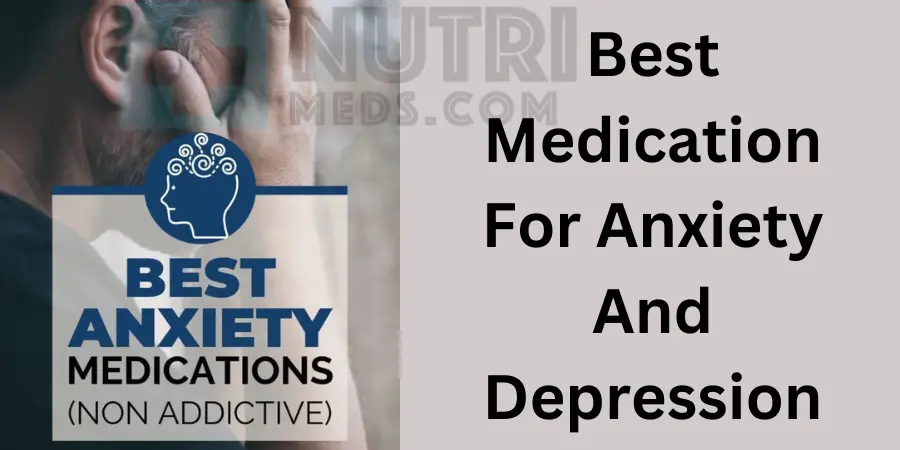- enquiry@nutrimedshop.com
- +1 848-480-6007
- Adderall
- Adipex
- Alprazolam
- Ambien
- Ativan
- Carisoprodol
- Clonazepam
- Codeine
- Darvocet
- Demerol
- Diazepam
- Dilaudid
- Fioricet
- Hydrocodone
- Hydromorphone
- Lorazepam
- Lorcet
- Lortab
- Meridia
- Methadone
- Norco
- Opana ER
- Oxycodone
- Oxycontin
- Percocet
- Phentermine
- Roxicodone
- Soma
- Suboxone
- Subutex
- Tramadol
- Valium
- Viagra
- Vicodin
- Xanax
- Klonopin
- Cialis

What you need to know about Bipolar Disorder
2025-02-18Introduction
Bipolar disorder is a mental health condition that leads to extreme mood swings, which include emotional highs, known as mania or hypomania, and lows, or depression. You know what they say, life ain’t no straight line – it’s all an up and down journey. Bipolar disorder is just that, but on steroids.
Importance of raising awareness and understanding
Now, why should we talk about this? So glad you asked! The thing is, understanding bipolar disorder is pivotal, not just for those affected but also for their loved ones. Increasing our collective knowledge about this disorder not only empowers individuals to seek help but also chips away at the tendrils of stigma that often surround mental health issues. Time to pop that bubble of ignorance, eh?
Understanding Bipolar Disorder
Definition and diagnostic criteria
So, let’s dive a little deeper, shall we? Bipolar disorder, previously known as manic-depressive illness, is defined by the American Psychiatric Association as a brain disorder that causes unusual shifts in mood, energy, activity levels, and daily functioning.
Now, don’t be quick to self-diagnose. A single erratic mood swing doesn’t stamp bipolar disorder on your forehead. The cycles of mood swings tend to be more pronounced and come with other symptoms.
Types of bipolar disorder: Bipolar I, Bipolar II, Cyclothymic disorder
Just as we have different flavours of ice cream, there are different types of bipolar disorder!
- Bipolar I is characterised by manic episodes lasting at least a week or manic symptoms so severe that immediate hospital care is needed.
- Bipolar II? That’s a pattern of depressive and hypomanic episodes, but not the full-blown manic episodes of Bipolar I.
- And then there’s cyclothymic disorder, where you have periods of hypomania and depressive symptoms for at least two years, but they don’t meet the diagnostic requirements for hypomanic or depressive episodes.
Key differences between bipolar disorder and other mental health conditions
Are you thinking, “Hold up, isn’t it the same as depression?” Nah, not really. Bipolar disorder includes episodes of depression, yeah, but it’s like scoring a combo – you get periods of mania or hypomania too. Most other mental disorders don’t send you on this emotional yo-yo ride.
Signs and Symptoms
Circling back to our rollercoaster ride, let’s talk about the highs and lows.
1. Manic episodes
- Euphoria and heightened energy: During a manic phase, you feel all giddy and energetic, kind of like you’ve drunk a gallon of coffee — on steroids!
- Grandiose thoughts and risky behaviour: You suddenly feel like a superhero. You may make extravagant plans and risky decisions, more like “I’m gonna buy a castle in Scotland. Oh, and maybe a dragon too!”
- Decreased need for sleep and rapid speech: You start to blabber away like there’s no tomorrow and sleep? Who needs it!
2. Depressive episodes
- Persistent sadness and decreased energy: Now the ride takes a steep dive. There’s a feeling of sadness that just won’t lift and you’d rather binge-watch paint dry than do something enjoyable.
- Feelings of hopelessness and worthlessness: You start to feel as if everything is pointless, or even worse – you are, if you know what I mean.
- Changes in appetite, sleep patterns, and concentration: You could be indulging in midnight pancakes one moment, and forgetting to eat the next. Sleep could either be a distant dream or your favourite pastime. Concentration? What’s that again?
Causes and Risk Factors
Ever wondered why one person gets a golden ticket to this rollercoaster ride and another doesn’t? The reasons aren’t crystal clear but, like most mental health issues, it seems to be a combo of genetics, brain structure, and environmental factors.
1. Biological factors
- Genetics and family history: If you’ve got a close relative who’s a fellow coaster passenger, there’s a chance you could be one too.
- Brain structure and chemistry: Let’s say it has a lot to do with the wonderful world of neurotransmitters working in your magnificent brain.
2. Environmental factors
- Life events and stressors: Sometimes, an emotional trigger such as intense stress, overuse of alcohol, or poor sleep could light the fuse.
- Substance abuse and its impact: Substance abuse often goes hand in hand with bipolar disorder. Whether they’re a cause or a consequence is still a gray area.
Diagnosing Bipolar Disorder
1. Importance of consulting a mental health professional
Has reading all this made you suspicious about your own mood swings? Before you Google “How to deal with bipolar disorder,” please consult a qualified mental health professional. They can rule out other potential causes and guide you with appropriate diagnosis and treatment.
2. Assessment tools and criteria used for diagnosis
There’s no simple blood test to spot bipolar disorder. Diagnosis involves detailed interviews, physical exams, and sometimes even mood charting.
Identifying bipolar disorder in oneself or others
1. Recognizing signs and symptoms
The first step to catch this slippery disorder in the act is to understand the signs and symptoms we talked about earlier.
2.Seeking appropriate help and support
If you notice these patterns, seek help. Talk to a mental health professional. Heck, even discussing it with a trusted person in your life can be a great starting point.
Living with Bipolar Disorder
It ain’t rainbows and butterflies, but life with bipolar disorder doesn’t have to be a never-ending roller coaster ride. Efforts in managing symptoms can help you live a healthier life.
Treatment Options
1. Medication
- Mood stabilisers: These are the superhero team meant to keep those mood swings in check.
- Antidepressants and anti-anxiety medications: These guys serve as the supporting cast to deal with associated symptoms.
2. Therapy and counselling
- Cognitive-behavioural therapy (CBT): This talk therapy helps understand and change thought patterns leading to harmful actions or emotions.
- Interpersonal and social rhythm therapy (IPSRT): This smarty focuses on the stabilisation of daily rhythms, like sleeping, eating, and exercising.
3. Lifestyle changes
- Regular exercise and healthy habits: A little bit of sweat and a balanced diet can go a long way.
- Stress management: Mindfulness, yoga. Heard of them? Time to give it a shot!
Nurturing Relationships
- Educating loved ones about bipolar disorder: Awareness is the first step towards support. Inform your family, friends, and co-workers about your condition.
- Honing communication skills: Plain and simple, talk it out. Conversations can work miracles.
- Building a supportive network: Surround yourself with folks who understand and support you.
Coping Strategies and Self-Help Techniques
- Identifying triggers and early signs: Know your enemies. Understand what triggers your mood episodes.
- Developing a wellness plan: Create a roadmap for your recovery with small measurable goals.
- Practising self-compassion: Be kind to yourself. It’s not a race and you’re doing the best you can.
Resources and Support
Life isn’t meant to be a solo journey. There are several resources to help you navigate through the rocky terrain of bipolar disorder.
A. Support Groups and Communities
- Benefits of joining support groups: You can meet others who are in the same boat. It’s comforting to know that you are not alone, isn’t it?
- Online forums and communities: Not an “in-person” groupie? There are numerous online communities you can join too!
B. Professional Support
- Psychiatrists, psychologists, and therapists: They’re the professional rockstars you need in your corner!
- National helplines and crisis hotlines: Urgent help is always a call or a text away.
C. Self-Education and Reliable Information
Knowledge is power, my friends. Equip yourself with accurate info about your condition.
- Books, websites, and publications: Get your hands on every reliable source of information.
- Organisations and foundations dedicated to bipolar disorder: They offer resources like education, advocacy, and research.
Conclusion
In a nutshell, bipolar disorder is a complex but manageable condition. It fluctuates from mania to depression but it doesn’t define you. It is a part of you just like everything else.
A. Recap of the key points:
We’ve discussed a lot, from the definition, symptoms, and causes to treatment options and resources. I hope it helps unravel the mystery around bipolar disorder a bit.
B. Importance of empathy, support, and destigmatization
It’s about time we normalised discussions on mental health. This, my friends, starts with empathy, acceptance, and understanding. Because every ‘I understand’, every supportive nod counts. So let’s be there for each other, shall we?
C. Encouragement to seek professional help and build a support network
If you reckon you could be dealing with bipolar disorder, don’t hesitate to reach out for professional help. There are numerous resources available to support you in your journey, and remember, you are not alone on this ride.
FAQs (Frequently Asked Questions)
- Can bipolar disorder be cured? Well, my friend, bipolar disorder is a chronic condition. There may not be a “cure” in the conventional sense, but it can definitely be managed effectively with the right medication, therapy, and lifestyle changes
- What impact does bipolar disorder have on relationships? Imagine having a wild bear for a pet. It can be challenging, right? Similarly, bipolar disorder can add layers of complexity to relationships. However, with understanding, communication, and therapy, these relationships can grow stronger.
- Are there any alternative treatments for bipolar disorder? Indeed, there are! Some folks find relief in meditation, yoga, dietary changes, and herbal supplements. It’s essential to discuss these with your healthcare provider first, though.
- Can lifestyle changes alone manage bipolar disorder? Lifestyle changes are like sidekicks; powerful but they’re not Batman. They can work wonders along with medication and therapy but might not be enough on their own.
- How can I support a loved one with bipolar disorder without overstepping boundaries? Be empathetic, not sympathetic. Learn about the condition, offer your presence, and most importantly, respect their space. Because sometimes, being silent together is all the support needed.



